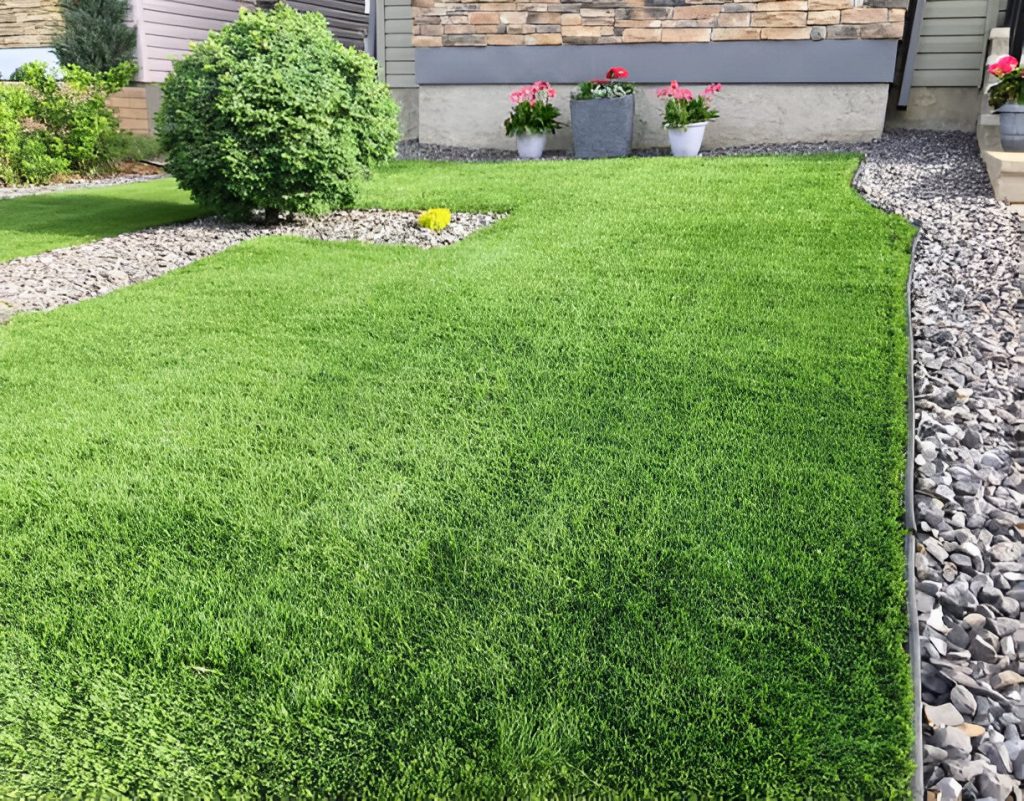Is the grass greener on the other side of your fence? Well, they might be using artificial grass! Yes, artificial grass is now a full-fledged thing and trending for a good reason.
Artificial grass may seem more costly than real grass at first, but it really ends up being less expensive over time. Compared to real grass, artificial grass lasts a lot longer and needs very little upkeep. With that in mind, let’s explore the eco-friendly benefits of artificial grass in NYC.
Benefits of Artificial Grass
1. Made with Recycled Material
Certain advocates of natural lawns have voiced concerns about the environmental impact of plastics used in some grass products. When it’s time to replace your lawn, you can recycle it since many of these items are produced with recycled materials.
Other than that, artificial grass has a lifespan of 10–20 years with little upkeep. The plus point is that daily, heavy usage shouldn’t shorten the lifespan of an artificial lawn.
Because it is made from recycled materials, artificial grass is a great choice for those who are concerned about the environment and want to make green choices for their house or company.
2. Less Air Pollution and Carbon Emission
According to the US Environmental Protection Agency, a significant portion of the air pollution in the United States comes from lawn mowers and other tools used for lawn care, such as hedge trimmers and edgers.
In general, the larger your natural lawn is, the more pollutants it is likely to produce. In addition to increasing levels of air pollutants in the area, this also exposes you, particularly if you’re the one working in the yard, to potentially dangerous particles.
By switching to Artificial grass in NYC, you can lessen your personal impact on pollution levels while also preventing needless emissions. It’s a simple approach to lessening your impact on the environment and saving money on gasoline and maintenance.
3. Less Waste in Landfills
Non-compostable yard cuttings, broken lawn care equipment, and plastic bags used for lawn care goods are just a few examples of what piles up at landfills.
Many states in the USA have made waste reduction a top priority in their fight against climate change and unnecessary waste. The installation of an artificial lawn can achieve this goal since it can last for decades.
4. Reduced Noise Pollution
Your neighbors will be grateful for one less lawnmower on Sunday mornings!
Above all else, you will be helping out the native flora and fauna. Local animal populations are already under stress from noise pollution, and it may become much more difficult for them to live as a result.
Some animals could lose the ability to hear, which can make it difficult for them to migrate or perhaps cause them to miss critical mating or warning signs. Your lawnmower, for example, can impact local wildlife.
5. Water Collection
Since synthetic grass cannot soak up rain, any precipitation that does fall will simply flow off the surface and into the storm drains. The bright side is that you may make the most of this situation by constructing systems that collect runoff from rainstorms.
The collected water may then be used for many reasons, such as hydrating plants and trees.
6. Restrict Runoff and Erosion
If your property is on an incline, erosion is a serious concern during rainy seasons. Chemical runoff from fertilizers, insecticides, and herbicides might also badly affect the natural ecosystems on your land. Sediment, pollutants, and chemicals may all find their way into water sources via runoff.
However, the same issues won’t arise with artificial turf. Because it doesn’t require chemicals or fertilizer for maintenance, contamination would also not be a problem.
7. Conserving Water
Using water correctly is even more important than conserving water. Ample watering is necessary for the growth and maintenance of natural grass, particularly in regions prone to drought, which presents serious challenges globally.
But water isn’t necessary for artificial grass. When you’re cleaning fake grass, you could give it a quick wash every so often. So, if you have a large lawn and are concerned about water use, artificial grass is a great option to consider.
Read more: What Maintenance is Required After Artificial Grass Installation?
Go Green All Year Long With Artificial Grass!
Artificial grass is more than simply a green option. You can be certain that this landscaping choice will retain its freshness for years to come!
Are you looking for artificial grass providers in NYC? When planning an eco-friendly lawn or backyard, call the experts at Artificial Grass NYC. Together, we can create a synthetic lawn layout that complements your ideal backyard design while simultaneously minimizing your impact on the environment!













